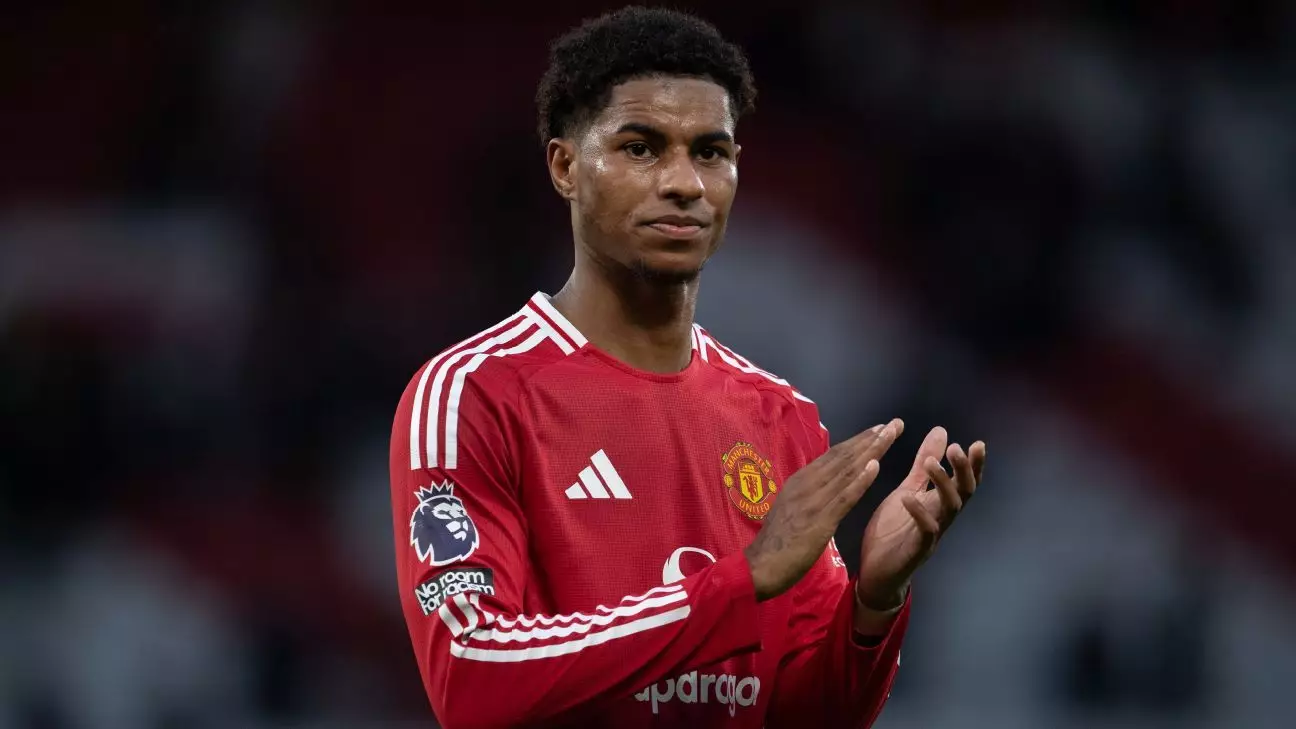The narrative surrounding Marcus Rashford’s recent absence from Manchester United has been multifaceted and fraught with tension. After a four-game hiatus, the 27-year-old forward made his return to the squad during a Premier League match against Newcastle United. Coach Ruben Amorim, who has been under scrutiny during his tenure, chose to feature Rashford on the bench rather than start him—a decision that has sparked considerable debate among fans and analysts alike. Rashford’s last appearance prior to this match occurred during United’s Europa League clash against Viktoria Plzen on December 12, marking an unusually prolonged absence for a player of his caliber.
Rashford was notably absent in significant fixtures, including the loss to Manchester City and the subsequent defeats against Tottenham, Bournemouth, and Wolves. Amorim’s remarks hinted at a connection between Rashford’s training performances and his exclusion from the squad. This underscores a broader issue: the relationship between performance in training and selection decisions is often murky, and players’ perceptions of fairness in these matters can lead to dissatisfaction. Rashford himself expressed a desire to leave Manchester United, citing a need for a “new challenge.” This declaration raises questions about not only his future but also the environment at United that may provoke such sentiments from a homegrown player.
Rashford’s reintegration into the squad comes at a crucial time, as key players like Bruno Fernandes and Manuel Ugarte face suspensions. Fernandes received a red card in a disappointing 2-0 defeat to Wolves, while Ugarte accumulated five yellow cards, rendering him ineligible for the match against Newcastle. This unfortunate combination of absences for the squad would naturally elevate the importance of Rashford’s involvement, even if it means starting from the bench. For Amorim, the decision to select Rashford is simultaneously pragmatic and strategic, emphasizing the need for depth in a squad increasingly impacted by disciplinary issues.
The head coach’s explanation for including Rashford— “selection, and we have a lot of players outside so he’s in”—emphasizes a straightforward approach to squad management. However, it also reveals the precarious state of the team’s roster, as injuries and suspensions continue to challenge the coaching staff. Thus, Rashford’s return could be seen as a double-edged sword; while it bolsters a depleted squad, it also places a spotlight on the player at a time when his commitment to the club is being questioned.
As Manchester United navigates the complexities of this season, Rashford’s performance in the forthcoming matches will be crucial. The club is poised on the brink of potential changes in January, and the forward must demonstrate his value if he hopes to secure his place in a squad that could be reshaping. The whispers about his desire for change create a narrative filled with speculation regarding transfer interest, potentially altering the dynamics within the team if he chooses to pursue those opportunities.
While Rashford’s reappearance in the lineup against Newcastle may be seen as a boon, the underlying issues of form, commitment, and the relationship between player and management demand careful consideration moving forward. For Rashford, the next steps are vital—not just for his own career but also for the future of a Manchester United side in search of coherence and direction. The resolution of this chapter may ultimately hinge on how both Rashford and the club navigate these turbulent waters in the months to come.

Leave a Reply